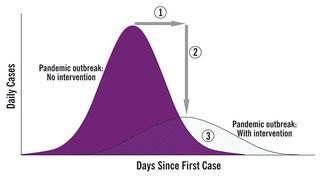Marty Nemko's Blog, page 225
April 1, 2020
UltraCourses The coronavirus’s silveriest lining?
 Years ago, I wrote about a clearly superior form of online education that the editors at TIME, The Atlantic, and the Washington Post deemed worth of publication. But it never got implemented. Amid the coronavirus, online education is suddenly the norm, K-20 and so perhaps the timing is better now. I lay out the case in my Psychology Today article today.
Years ago, I wrote about a clearly superior form of online education that the editors at TIME, The Atlantic, and the Washington Post deemed worth of publication. But it never got implemented. Amid the coronavirus, online education is suddenly the norm, K-20 and so perhaps the timing is better now. I lay out the case in my Psychology Today article today.
Published on April 01, 2020 17:29
Working at Home in the Time of Coronavirus
 The coronavirus is forcing many people to work from home, and they’re not used to it. As one said, “My commute is 15 feet from my bedroom, no one is structuring my day for me, and there’s no one to talk with.”
The coronavirus is forcing many people to work from home, and they’re not used to it. As one said, “My commute is 15 feet from my bedroom, no one is structuring my day for me, and there’s no one to talk with.”My Psychology Today article today presents my answers to questions my clients have been asking me:
Published on April 01, 2020 00:40
March 31, 2020
Affirmative Actions: A short-short story in the time of coronavirus
 Assistant Professor Lily Sakai heads the infectious disease lab at Pennsylvania Institute of Technology.
Assistant Professor Lily Sakai heads the infectious disease lab at Pennsylvania Institute of Technology.After staring at The Letter, she finally had the courage to open it:
Dear Dr. Sakai,In academia, it’s up or out; If you don’t get tenure, you lose your job and, as damaged merchandise, your career is essentially over after it had barely started. Even Lily's almond skin couldn't hide the furious blood rushing to her cheeks.
While we acknowledge your brilliance and hard work, we regret to inform you that we have given our department's one tenure slot to someone else.
Sincerely,
Anthony Williams, Ph.D., Dean
Her only significant flaw had been her temper and now, with nothing to lose, it was unbridled. Aware that like all viruses, COVID-19 mutates, she tested 10 mutations with mice to identify the most virulent one, knowing that the world's efforts to create a vaccine wouldn’t work on a mutation. She then cultured a vial-full (billions of copies of the virus), and headed to San Francisco Airport's long-term parking lot that serves the international terminal.
She got on at the first stop, opened her attaché case, and started reading journal articles. Despite the travel restrictions, because of the reduced bus service, by the last stop before reaching the terminal, the bus was nearly full. Shielded by the attache, she opened the vial. She wanted to die but, in the process, inflict maximum damage to humankind—She was the academic version of a suicide bomber.
In those final minutes from the last parking lot stop to the terminal, every passenger had inhaled a full dose of what she called, COVID-29. Now, all the passengers would fly off to far-flung destinations around the world.
She hopped on a plane to L.A. With flights cut back, the plane was full. She opened another vial, again shielded by her attaché case.
She toured L.A, from the Magic Castle to Disneyland, Universal Studios to the Museum of Tolerance, where she aired another vial. She ate at the finest restaurants as well as best holes in the wall. With nothing to lose, she tried mushrooms, acid and even heroin.
One month later
There are worldwide reports of a new, mysterious form of coronavirus, with deaths doubling every single day. Lily is one of the early dead.
Atop the death and mayhem of COVID-19, the politely termed “social unrest” metastasized: mass looting, first of drug stores and supermarkets, then of homes. The health care system gradually was forced to shut down for lack of money and many health-care workers succumbing to the virus despite wearing PPEs. The internet and then all electricity died, in part the result of protestors who threw molotov cocktails and other IEDs into utility plants in response to ever-declining service. Then the water pumps stopped working altogether, so there was no water, the true staff of life. First they killed the dogs, then the old, then the disliked, then anyone they could.
One year later
All is dark.
In an underground compound, which had been stocked with a year’s worth of food, water, and other supplies, dozens of the commune's members lie dead. Three remain. Down to their last quart of water, they creep up with their pistols, only to see the post-apocalypse: burned and long-looted buildings, no people.
When one of them wasn’t looking, the other two, desperate, drank that last quart, trying to be quiet so he didn't hear. But he did. Shocked, angry, then terrified, he shot both of them in the face.
He stared into the nothingness.
Published on March 31, 2020 10:52
March 30, 2020
The Fact-Centered vs the Feeling-Centered Person: A debate in the time of coronavirus
 Yesterday, I had a conversation that illuminated a core difference among people. My Psychology Today article today shares that conversation’s essence so it will provide an opportunity for readers to self-assess their openness to differing but responsibly held positions. That may be more important today than ever.
Yesterday, I had a conversation that illuminated a core difference among people. My Psychology Today article today shares that conversation’s essence so it will provide an opportunity for readers to self-assess their openness to differing but responsibly held positions. That may be more important today than ever.
Published on March 30, 2020 10:20
March 29, 2020
Growing Tomatoes from Seed in 21 Easy Steps

1. In March or April, get a small plant pot or a paper cup with a hole in the bottom. (Of course, if you want more than one tomato plant, get more pots.)
2. Fill it to ½” from the top with potting soil.
3. Lay two seeds in the center. (Park Seed sells a wide range of highly rated, nationally adaptable varieties. Indeterminate varieties grow large and need be planted in the ground. Determinate varieties can grow in a large pot.)
4. Cover the seeds with a bit of soil.
5. Cover the pot’s top with plastic wrap.
6. Put the pot in the center of a plate.
7. Fill the plate’s basin with water. That way the soil gets watered without disturbing the seeds.
8. Put the plate in a warm spot in your house, but out of the sun.
9. Check the plate every day or two to be sure there’s at least some water in it.
10. In 5-12 days, at least one of the two seeds should germinate. If both do, snip out the scrawnier of the two with a scissor or your fingernails.
11. Prop up the plastic wrap with a plastic plant label or short pencil.
12. Move the plate into a sunny window. From now on, only put water in the plate when the top of the plant is dry. After a few days, move the plate outdoors--a place that gets a few hours per typical day of sun.
13. When your seedling has two or three sets of leaves, it’s ready to be transplanted into its final home: a full-sun spot in your garden. To prepare the soil, dig out a 1-foot cube of soil, replace it while adding perhaps 25% potting soil or planting mix plus a handful of granular fertilizer—general purpose, tomato, or even lawn fertilizer will do. (As mentioned, determinate varieties of tomatoes can grow in a large pot.)
14. Plant the seeding deep: so that only the leaves are above ground. The rest of the stem will sprout roots, making for a stronger plant. Surround the plant with a tall tomato cage, such as this one available on Amazon.
15. Snails like tomato seedlings. So if your area gets snails, put a 1” wide circle of snail bait that’s one-foot away from the plant.
16. Keep the plant well-watered: when you put your finger 1” in the soil and it’s dry, it’s time to water.) Do water deeply, so the water reaches the roots. Of course, as the plant gets bigger, you’ll need to water more deeply.
17. The plant will grow quickly. When it reaches about 2-feet tall (about a month after planting in the garden), to get bigger tomatoes, prune away perhaps 1/3 to half-of the side shoots.
18. Keep the plant growing inside the tomato cage by tucking stems into the cage.
19. When the fruit are just starting to turn from green to yellow, cut back the water by 1/3, that is, water, only when your finger has to go down 3” to reach dryness.
20. Harvest when reasonably red if you prefer some tartness or fully red in you want to prioritize sweetness. With yellow or orange varieties such as Orange Paruche, Sun Sugar, Northern Lights or Brazilian Beauty harvest when they’re yellow or orange.
21. This should yield you wonderfully delicious tomatoes, and if you grew at least a few plants, plenty to give to friends and neighbors.
Published on March 29, 2020 13:41
Growing Tomatoes from Seed

1. In March or April, get a small plant pot or a paper cup with a hole in the bottom. (Of course, if you want more than one tomato plant, get more pots.)
2. Fill it to ½” from the top with potting soil.
3. Lay two seeds in the center. (Park Seed sells a wide range of highly rated, nationally adaptable varieties.)
4. Cover the seeds with a bit (around ¼ to ½”) of soil. (Believe me, you don’t have to measure.)
5. Cover the pot’s top with plastic wrap.
6. Put the pot in the center of a plate.
7. Fill the plate’s basin with water. That way the soil gets watered without disturbing the seeds.
8. Put the plate in a warm spot in your house, but out of the sun.
9. Check the plate every day or two to be sure there’s at least some water in it.
10. In 5-12 days, at least one of the two seeds should germinate. If both do, snip out the scrawnier of the two with a scissor or your fingernails.
11. Move the plate into a sunny window. After a few days, move the plate outdoors--a place that gets a few hours per typical day of sun.
12. When your seedling has two true sets of leaves (the lance-shaped ones, not the initial oval ones), it’s ready to be transplanted into its final home: a full-sun spot in your garden. To prepare the soil, dig out a 1-foot cube of soil, replace it while adding perhaps 25% potting soil or planting mix plus a handful of granular fertilizer—general purpose, tomato, or even lawn fertilizer will do.
13. Plant the seeding deep: so that only the leaves are above ground. The rest of the stem will sprout roots, making for a stronger plant. Surround the plant with a tall tomato cage, such as this one available on Amazon:
14. Snails like tomato seedlings. So if your area gets snails, put a 1” wide circle of snail bait that’s one-foot away from the plant.
15. Keep the plant well-watered: when you put your finger 1” in the soil and it’s dry, it’s time to water.) Do water deeply, so the water reaches the roots. Of course, as the plant gets bigger, you’ll need to water more deeply.
16. The plant will grow quickly. When it reaches about 2-feet tall (about a month after planting in the garden), to get bigger tomatoes, prune away perhaps 1/3 to half-of the side shoots.
17. Keep the plant growing inside the tomato cage by tucking stems into the cage.
18. When the fruit are just starting to turn from green to yellow, cut back the water by 1/3, that is, water, only when your finger has to go down 3” to reach dryness.
19. Harvest when reasonably red (if you prefer tartness) or fully red in you like sweetness. (With yellow or orange varieties such as Orange Paruche, Sun Sugar, Northern Lights or Brazilian Beauty harvest when they’re yellow or orange)
20. This should yield you wonderfully delicious tomatoes, and if you grew at least a few plants, plenty to give to friends and neighbors.
Published on March 29, 2020 13:41
March 28, 2020
My Sheltering-in-Place Diary: Mar. 28, 2020: How I'm staying sane
 Cabin fever is spreading like the coronavirus. My diary entry of a week ago told you some of what I’m doing to stay sane. In today's Psychology Today article, I try to do that by describing my typical day amid “sheltering in place.” It embeds ideas you may find helpful regarding practicalities, emotions, and even humor.
Cabin fever is spreading like the coronavirus. My diary entry of a week ago told you some of what I’m doing to stay sane. In today's Psychology Today article, I try to do that by describing my typical day amid “sheltering in place.” It embeds ideas you may find helpful regarding practicalities, emotions, and even humor.
Published on March 28, 2020 00:37
March 27, 2020
Marketing Your Private Practice in the Time of Coronavirus
 Many private practitioners’ caseload has lightened because of the coronavirus pandemic, but if your decline is large or if your practice wasn’t full before the pandemic, the virus could have a silver lining for you: Perhaps it’s a wake-up call to take a hard look at why: Are you not sufficiently effective or likeable? And/or is it a marketing problem? I offer suggestions in my Psychology Today article today.
Many private practitioners’ caseload has lightened because of the coronavirus pandemic, but if your decline is large or if your practice wasn’t full before the pandemic, the virus could have a silver lining for you: Perhaps it’s a wake-up call to take a hard look at why: Are you not sufficiently effective or likeable? And/or is it a marketing problem? I offer suggestions in my Psychology Today article today.
Published on March 27, 2020 00:08
March 26, 2020
Communicating Across the Chasm: Should we prioritize flattening the coronavirus's medical or economic curve?
 My Psychology Today article today offers a a dialogue that synthesizes actual exchanges about the coronavirus that I’ve had with some smart people regarding whether, for now, to prioritize flattening the medical curve or the economic curve. It highlights the difficulty of communicating across the ideological chasm. Of course, it has implications for discussing all manner of differences, including those have riven the nation before the COVID-19 pandemic.
My Psychology Today article today offers a a dialogue that synthesizes actual exchanges about the coronavirus that I’ve had with some smart people regarding whether, for now, to prioritize flattening the medical curve or the economic curve. It highlights the difficulty of communicating across the ideological chasm. Of course, it has implications for discussing all manner of differences, including those have riven the nation before the COVID-19 pandemic.At the end, I invite readers to evaluate themselves: Were they able to consider both perspectives fair-mindedly?
Published on March 26, 2020 00:09
March 25, 2020
Enduring Changes from the Coronavirus Pandemic
The coronavirus pandemic will cause major enduring changes. I outline them in my Psychology Today article today. 

Published on March 25, 2020 14:29
Marty Nemko's Blog
- Marty Nemko's profile
- 4 followers
Marty Nemko isn't a Goodreads Author
(yet),
but they
do have a blog,
so here are some recent posts imported from
their feed.



